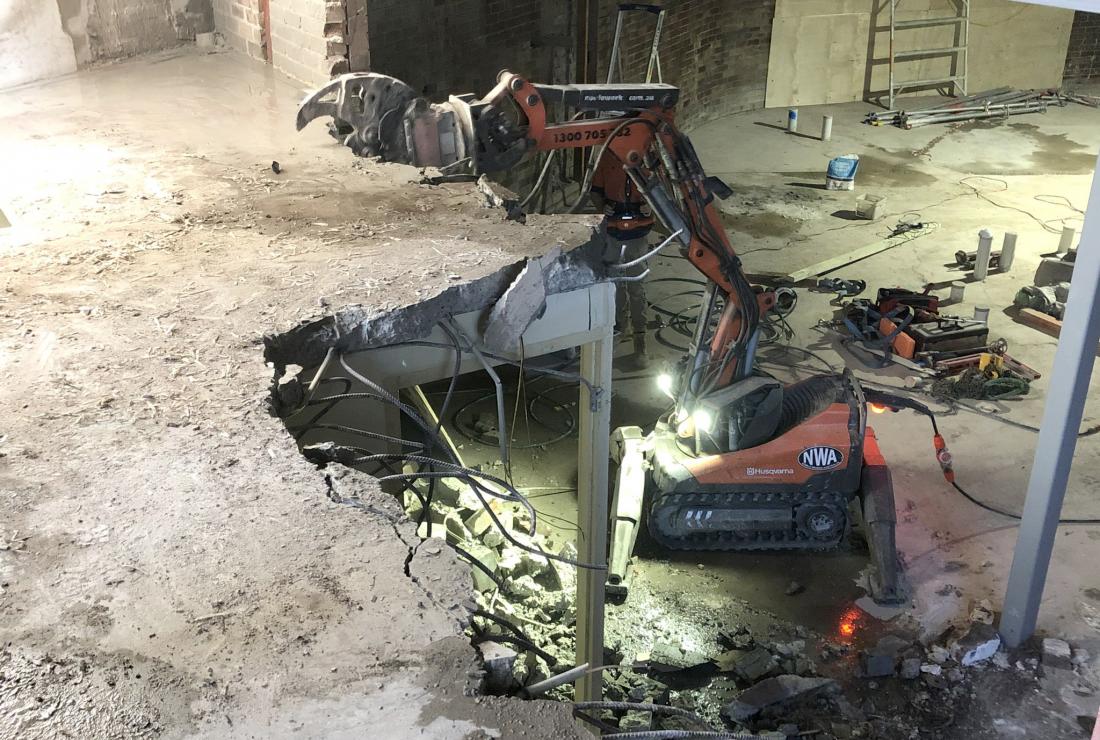Robotic demolition in residential construction: Enhancing safety and efficiency
Urbanisation is an organic process that necessitates continuous innovation in the demolition industry. The construction of new buildings, alterations to infrastructure and the renovation of old urban areas all demand more dependable, secure and efficient demolition equipment to get the job done in a responsible way.
Robotic demolition has emerged as a game-changing response and has gained popularity in residential construction projects around Sydney. This modern demolition method offers the relative safety, efficiency and speed of mechanical demolition along with the precision and control of manual demolition at a reasonable cost.
Let’s find out how robotic demolition is transforming the construction landscape in Sydney.
What is robotic demolition?
Robotic demolition is the use of specialised machines equipped with hydraulic arms or high-pressure water jets (hydrodemolition) to perform controlled demolition tasks. These machines are remotely operated by skilled operators who can precisely target and dismantle structures without putting themselves or other workers at risk.
Why robotic demolition?
Demolition is generally acknowledged as one of the most dangerous work areas in construction, yet many demolition companies still cling to older methods like labour-intensive manual demolition or mechanical demolition.
This is despite the fact that the first mass-produced remote-controlled robotic machine hit the market in 1981.
This trend is changing, however, as demolition companies find ways to deliver safer, quieter, environmentally responsible ways to meet their customers’ needs. Here are some of the key benefits of robotic demolition.
Enhanced Safety
The primary benefit of using demolition robots is safety. They significantly reduce the risks associated with traditional demolition methods including falls, flying debris and exposure to dangerous substances like asbestos. Operators can remotely control the robots from a safe distance limiting theirs and their workers’ exposure to hazardous materials and unstable structures.
Precision and Control
Demolition robots can be equipped with advanced sensors and cameras that provide operators with a clear view of the demolition site. This level of precision and control allows operators to dismantle structures with accuracy, minimising risk of collateral damage to surrounding areas , structures and people.
Noise Reduction
Traditional demolition processes often produce excessive noise pollution. They cause disturbances to nearby residents and often disrupt the local community. Demolition robots, particularly hydrodemolition robots, are designed to be quieter than their traditional counterparts with massive reductions in noise and vibrations.
Dust Suppression
Dust generated during demolition can pose health risks and pollute the surrounding air. Robotic demolition services in Sydney NSW typically employ dust-suppression systems that help control and mitigate dust generation such as water hoses, cannons and misters as well as enclosures and barricades.
Power and Efficiency
Robotic-powered demolition has a clear advantage in terms of power and efficiency. Despite their smaller size compared to traditional excavators and mechanical jackhammers, demolition robots can pack as much punch as a machine of a much larger size. .
They can work continuously without interruption or downtime. For instance, a hydrodemolition robot can be up to 25 times faster than mechanical jackhammering.
This efficiency can lead to reduced project timelines and lower overall costs.
Reduced Environmental Impact
Robotic demolition is environmentally friendly and reduces environmental impact by controlling dust, noise and emissions (most demolition robots are electrically powered). The use of robots by demolition companies aligns with sustainability and responsible construction practices.
Versatility
Robotic demolition services can be tailored to suit various residential construction projects, from renovation and remodelling to complete building demolition. These robots can be moved into much smaller spaces than most excavators and other equipment to accomplish works that may not be easily achievable using other methods.
Applications of robotic demolition in residential construction
Building Deconstruction
Robotic demolition is ideal for the selective deconstruction of buildings which requires the removal of specific elements while leaving others intact. This is particularly useful in renovation and remodelling projects where preserving certain structural components is essential.
Concrete Removal
Demolition robots excel at concrete removal. They are particularly good at removing concrete walls, floors and foundations with a precision that keeps surrounding structures unaffected.
Hazardous Material Removal
In cases where hazardous materials like asbestos need to be removed, robots are ideal for controlled removal. They limit worker exposure to harmful substances that cause serious damage to their health. This can be beneficial when contaminated material is discovered under concrete slabs.
Chimney and Stack Demolition
Demolition robots can efficiently dismantle chimneys and stacks, even in confined spaces. It is a safer and cost-effective alternative to explosive demolition, which is far more dangerous to both workers and surrounding structures.
Interior Demolition
Demolition robots are particularly good at interior demolition work in residential buildings. They can be used to remove walls, ceilings and partitions without damaging adjacent structures or stopping to wait for the dust to settle.
Conclusion
Robotic demolition services in Sydney have positively impacted residential construction by delivering cleaner, quieter, safer, more precise and efficient demolition projects for residents and workers.
Noble Works Australia offers robotic demolition for more specialised projects and because robots are more compact and powerful than larger machines, they can be transported into areas where demolition labourers would have to carry out the work. Contact us for more information.


